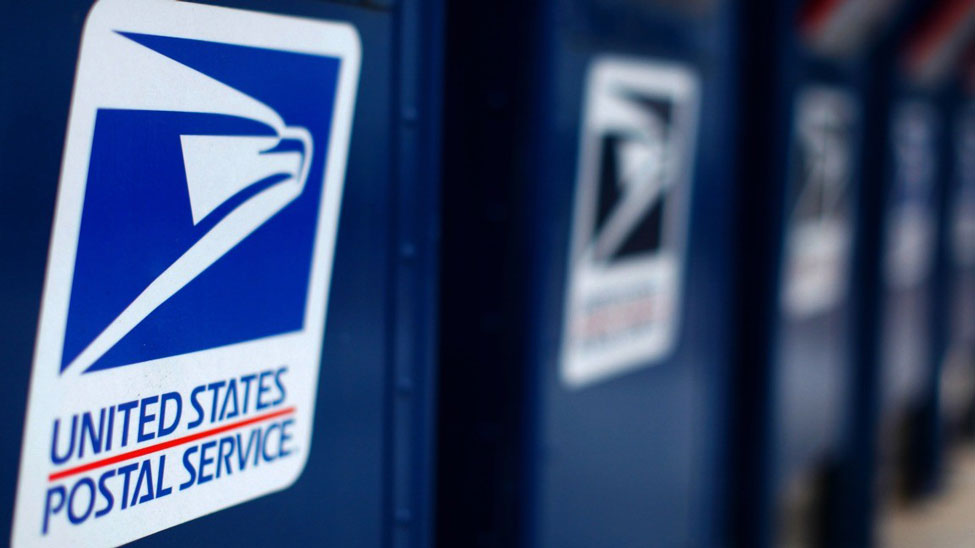
DeJoy: our operating practices…reflect a Postal Service designed for three decades ago

The United States Postal Service announced it has filed plans with the Postal Regulatory Commission (PRC) to improve mail processing and transportation and explained how these improvements will align with proposed refinements within its existing service standards for Mail and Package Products.
Last month, the Postal Service held a virtual conference about the proposed changes where it solicited feedback from its stakeholders, including the mailing and shipping community and members of the public, to consider their input and ensure the utmost transparency throughout the process and comply with the applicable regulatory processes.
Comments received during the virtual conference have been considered and the Postal Service has now filed its formal request asking for an advisory opinion from the PRC. After receiving an advisory opinion from the PRC, the Postal Service will consider the Commission’s opinion and finalize its decision.
Central to the earlier virtual conference discussion and today’s filing are operational improvements and corresponding refinements to process, transport and deliver all categories of mail and packages through an integrated network without expanding the existing day ranges of service standards, and for some products shortening the current day ranges. These refinements will deliver important benefits to the organization and its customers as the Postal Service continues to implement a more efficient and effective operating model. The proposed refinements are within the existing service standards and will enable the Postal Service to operate more reliably and at a lower cost to deliver, and with a more rational logistics approach applicable to today’s use of our Postal System.
As Postmaster General Louis DeJoy noted earlier in this filing process, “As we integrate our transportation, processing, and delivery network to logically sequence the flow of mail and packages by deploying improved operating practices in our redesigned facilities network, we expect to improve service reliability, reduce cost and grow our business.”
DeJoy continued: “Despite the many improvements we have made since the release of the Delivering for America plan, our service requirements, facilities infrastructure, business rules and operating practices have continued to reflect a Postal Service designed for three decades ago. However, since 1997, we’ve seen an 80-percent decline in Single-Piece First-Class Mail volume, the significant expansion of delivery points, the growth in the percentage of mail obtaining discounts through workshare programs, and the growth of our package business. Our 10-year Delivering for America plan is transforming our network to better reflect today’s market demands and the current volumes and product mix. This revamped, integrated network, designed for a more unified, logically sequenced movement of mail and packages, combined with modifications to our service standards, but still within the current day ranges, will enable us to operate more efficiently and reliably, grow our business and give us a chance for a viable future.”
Today’s Postal Service filing with the PRC proposes key improvements and adjustments to optimize service and reduce cost, including:
- Transitioning from 3-Digit to 3-Digit ZIP Code standards to more precise 5-Digit to 5-Digit ZIP Code standards. This will make it easier for customers to understand exactly when their mail will arrive and improve the reliability and predictability of delivery.
- Reforming legacy business rules that are no longer tethered to today’s volume and product mix and that force USPS to do costly, expensive, and inefficient things such as executing a trip in the morning and another trip in the evening every day, to every office, no matter how far the office is from the mail processing plant. This reform allows USPS to adjust our operating practices to the current market realities and to implement more efficient transportation routes, thereby reducing costs, carbon emissions, and truck trips through neighborhoods.
- Expanding daily reach for most classes of mail and packages when traveling through the network; resulting in faster delivery expectations for some mail pieces. For instance, some mail and packages that used to take four days to deliver will now have a service standard to arrive in three days.
- Recognizing the significant volume reduction of Single-Piece First-Class Mail and making the long overdue adjustments required, while committing to a 3-day delivery standard for local Single-Piece First-Class mail, and in some instances even achieving a 2-day standard. On balance, the vast majority of First-Class Mail will have a service standard in either the same timeframe, or faster than, the current service standards. All First-Class Mail will still be delivered within a maximum of 5 days, with a national average of approximately three days. Additionally, other services like Marketing Mail and Periodicals will see improvements in their delivery standards due to a more effective and integrated network. Depending on location, time, and distance, expected time to deliver will increase for some ZIP code pairs, but still within the current service standard day ranges.
The proposed changes will maintain the existing 1-5 day service standards for First-Class Mail and are designed to enable the Postal Service to make optimal use of its updated and developing ground network. The streamlined processes for the integration of both mail and packages, will ensure efficiency and timeliness by enabling an integrated delivery network that avoids duplication and complexity. The refinements within the existing service standards are projected to enhance service reliability and predictability, crucial aspects of the Postal Service’s commitment to universal service.
Moreover, these modifications are anticipated to yield significant cost reductions for the Postal Service, with an estimated saving of approximately $3.6 to $3.7 billion annually. This aligns with the organization’s mandate to be financially self-sufficient, while continuing to deliver to every address across the nation.
In addition to the financial benefits, the proposed initiative also has environmental advantages. A decrease in the number of truck trips will lead to the Postal Service significantly reducing its carbon emissions, reinforcing its commitment to environmental sustainability.
The Postal Service will not implement the proposed service standard changes any sooner than 90 days after today’s request for an advisory opinion that was filed with the Commission, meaning any implementation of the proposed service standards will not occur until the next calendar year. As such, these proposed changes will not impact Election Mail for the upcoming election or our preparedness for Peak Season 2024. For the upcoming election, the Postal Service will again deploy our long-standing practices to ensure the appropriate handling and timely delivery of Election Mail; we will therefore be executing extraordinary measures beyond our normal course of operations in advance of Election Day throughout the Nation.







